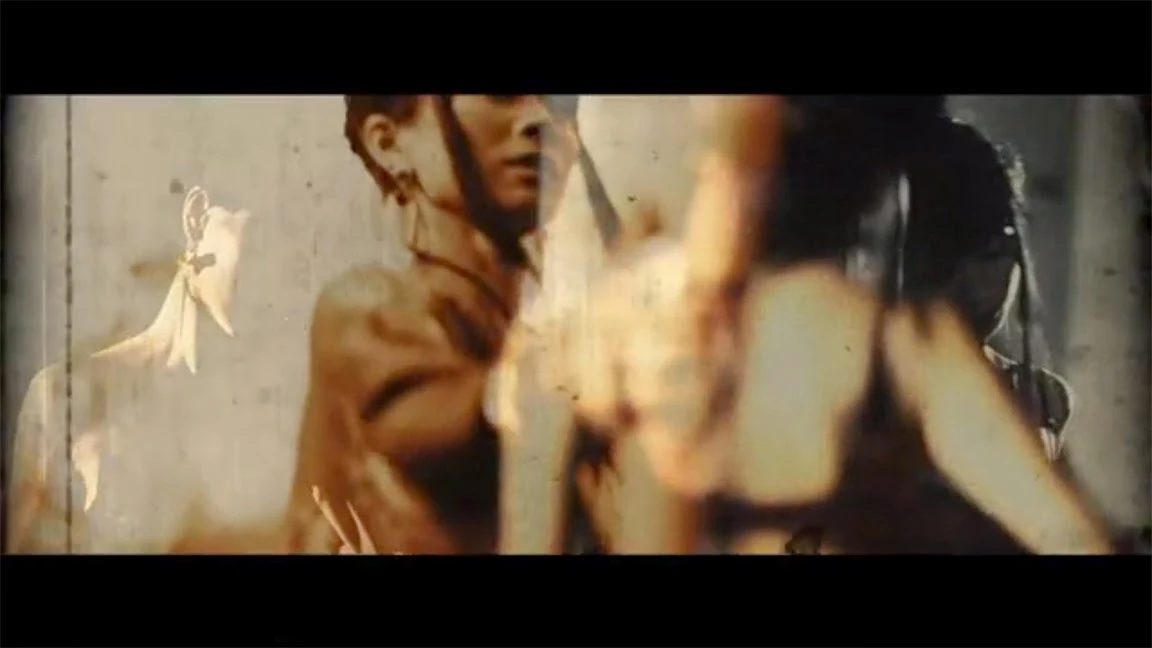To adapt a book to the screen is not an easy task, some screen writers fail miserably while others succeed garnering accolades from their peers and critics translating the written word to the captivating nuances of the cinematic language.
Moreover, to adapt a visceral descriptive erotic novel into a feature film without falling into the distastes of cheap quasi-pornographic movie making is truly not an easy task to accomplish.
Enter, THE KEY (2014) a feature film
adaptation to the screen on the erotic Japanese novel KAGI (1955) by
Junichiro Tanizaki, about a middle-aged painter (David Arquette as Jack)
who is deeply in love with his younger wife (Bai Ling as Ida) and in
spite of that love, they have grown physically and emotionally apart.
As time goes by and to cope with the inadequacies on their ailing marriage, Jack decides to keep a very
graphic and erotic journal with daily entries of all kind of sex games he demands from his
much younger wife, who complies with her husband's desires without
letting him know she is aware of his plans
In order to maintain creative integrity with Tanizaki’s narrative style of sexuality and destructive erotic obsessions, writer/director Jefrey Levy developed the storyline into a juxtaposition of voiceovers and colored moving pictures vignettes, instead of a direct dialogue between characters, alternating between the entries of their private journals.
THE KEY has the flair and flavor of an experimental film by the lengthy use of cinematic techniques like extreme close ups, unusual actors blocking and camera position and lighting schemes. Notably, the post-production displays a “
Sergei Eisenstein montage style” editing, recurrent piano chords musical track and many other visual effects like digital compositing, time passage compression, rotoscoping and frame tinting to represent the mood and pace of the story and in particular to this film, the emotional state of the characters.
At times, it seems as a modern version of the tinting and special effects adopted in early classic films, used to describe mood and intention of the narrative. But beyond than that, the film proves to be more experiential than experimental, immersing the audience in the voyeuristic colored world of the protagonists.
The lengthy use of captivating visual effects seems deliberate, but not in any way to showcase CGI/VXF prowess or just to be plainly gimmicky, but to evocate the poetic sensibility underlying the nature of the human condition as described in the context of the storyline. Obviously, director/writer Jefery Levy conjured this obsessive-self destructive-erotic tale adaptation (about Jack) into a moving redemptive tale of lessons learned (about Ida).
There are two other iterations of The Key produced by earlier filmmakers, namely, Odd Obsession, directed by Kon Ichikawa, a culturally repressed Japanese dramatic adaption of the erotic novel and La Chiave by Tinto Brass, released in 1983, an overly sexual adaptation of the novel in fascist Italy. Kon Ichikawa won the Jury Prize in Cannes in 1960 and La Chiave achieved domestic financial success in Italy but was considered very scandalous by audiences at large.
THE KEY is Jefery Levy cinematic tour de force, a visually stunning and immersive erotic tale with stellar performances by David Arquette and Bai Ling. The film premiered at the Real Experiment Film Festival on November 21 at the Laemmle Music Hall Theater in Beverly Hills.
Cast
David Arquette Jack
Bai Ling Ida
Nathan Keyes Kim
Nathalie Love Mia
Crew
Written, Directed, and Produced by Jefery Levy
Producer – Susan Traylor
Executive Producer – John Scheide
Executive Producer – Mark Urman
Co-Producer – Tom Sanford
Cinematographer – William MacCollum
Edited – Jefery Levy
Edited – Pablo Espada
Edited – Scott Roon
Casting Director – Johanna Ray
Production Designer – Jessee Clarkson
Costume Designer – Patrick Milani
Co-Costume Designer – Paige Basham
Hair and Make-Up – Gina Nicole Maceri
Visual Effects – Scott Roon
Sound Designer – Jamie Scott































































